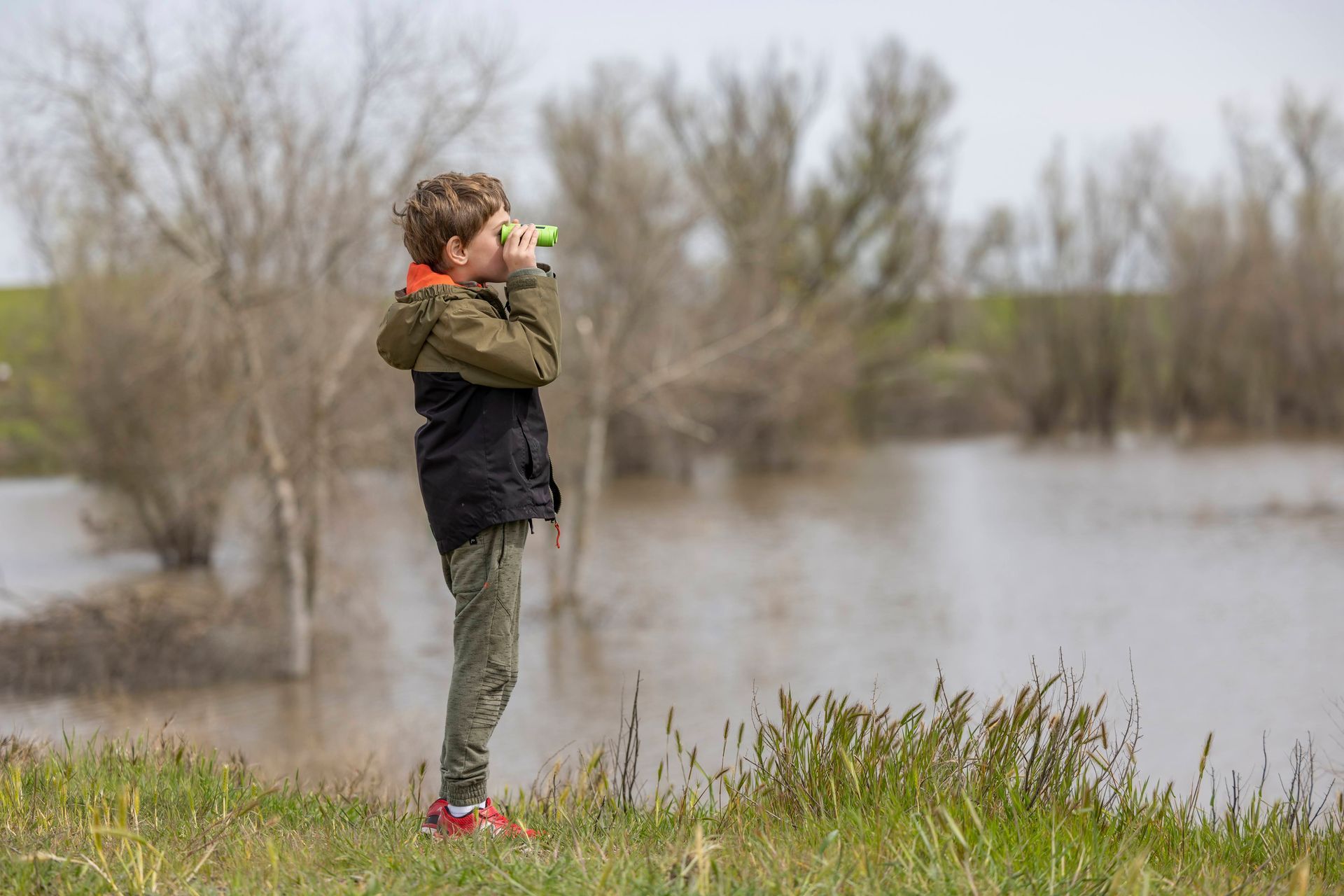Tuleyome's Science Corner - Habitat Types at the Woodland Regional Park Preserve

What was once a literal dump, has been transformed into a regional treasure under the guidance of Tuleyome and the City of Woodland. With support and input from stakeholders, educators and other local non-profits, the 165-acre Woodland Regional Park Preserve (WRPP), which previously hosted the City of Woodland refuse disposal site, has been remolded into a living classroom boasting a variety of habitat types found less and less frequently in our urban environment.
The upland grassland habitat occurs on the northern portion of the site. Topographically speaking, this is the highest portions of the site and supports native and non-native grasses and forbs as well as some trees. Wildlife species such as coyotes and upland birds have been documented in the upland habitat areas. The only water this portion of the site receives is rain water so is typically brown and dry in the hot summer months but green and alive with plants and wildlife during the wetter portions of the year. This area provides dry places for denning and foraging as well as nesting opportunities for ground nesting birds.
The riparian forests of California are sometimes called the “rain forests of California” because of the huge diversity they support. The riparian habitat onsite at WRPP occurs adjacent to the seasonal and perennial wetlands and along connecting drainages. Typical species found here include Fremont cottonwood (Populus fremontii), valley oak (Quercus lobata) and willow (Salix spp.) species along with California buckeye (Aesculus californica), blue elderberry (Sambucus mexicana) and coyote bush (Baccharis pilularis) to form a multilayer canopy. This dense canopy provides year-round cover for many species including: great-horned (Bubo virginianus) and barn owls (Tyto alba), red-tailed hawks (Buteo jamaicensis), American crow (Corvus brachyrhynchos), western bluebirds (Sialia mexicana), tree swallows (Tachycineta bicolor), white-crowned sparrows (Zonotrichia leucophrys), common garter snake (Thamnophis sirtalis), Pacific gopher snake (Pituophis catenifer), racoon (Procyon lotor), western pond turtles (Actinemys marmorata) and many other species terrestrial and aquatic species.
Wetlands have their own ecosystems made up of hydric soils and hydrophytic plant species and are classified into types such as seasonal or permanent depending on how long they remain wet, what the soils are composed of and what type of vegetation they support. The seasonal and perennial wetlands on site at WRPP provide vital habitat for migrating waterfowl coming through the Pacific Flyway. Wetlands also produce oxygen, sequester carbon and filter toxins from the water that recharges our underground aquifer. As the name suggests, seasonal wetlands are only wet for part of the year with soils that remain waterlogged for long periods of time. The emergent vegetation that grows in seasonal wetlands is specialized for soggy soil conditions and includes cattails (Typha sp.), bull rush (Scirpus acutus), sedges (Carex sp.) and rushes (Juncus sp.). Floating vegetation such as duckweed (Lemna sp.) or water primrose (Ludwigia peploides) can also be present. Eventually they dry and become cracked basins with little to no once-lush vegetation. Perennial or permanent wetlands stay inundated year-round and typically have open water with some aquatic floating or emergent vegetation around the edges of the water where the soil transitions from ponded to waterlogged. The vegetation provides cover for fish and wildlife species that may use the open water as part of their habitat. Species observed in the open water includes various waterfowl species such as mallard duck (Anas platyrhynchos), wood duck (Aix sponsa), American coot (Fulica americana) and many other waterfowl species.
Vernal pools are specialized seasonal wetlands. They are depressions in soil that has an underlying hardpan layer and typically don’t drain well. Because the underlying soil doesn’t drain, water from rain collects in these depressions and ponds until the rainy season is over. Vernal pools provide habitat for highly specialized plants and animals; many of them are listed as special-status species. While the pools are inundated, seeds from vernal pool plant species begin to germinate and aquatic invertebrate species begin to hatch. Vernal pool invertebrate species survive the dry period, sometimes for hundreds of years, as cysts in the soil and don’t hatch unless the conditions are right for them. The word “vernal” is a Latin word that means “spring” and as the pools begin to dry down, usually beginning in the spring, many colorful rings of flowers may appear in concentric circles around the sides of the depression. Vernal pools also provide habitat for a variety of other aquatic invertebrates, amphibians are an important source of food for waterfowl and shore birds.
Tuleyome was able to show off the amazing ecosystems at WRPP during the Spring Thing on March 18. Visitors had the opportunity to go on guide hikes showcasing the wetlands, birds, mammals, and "wild areas" of this urban "wilderness".
If you would like to learn more about WRPP, please visit Tuleyome’s website at https://www.tuleyome.org.
-Kristie Ehrhardt (kehrhardt@tuleyome.org)
Tuleyome Land Conservation Program Manager
RECENT ARTICLES






